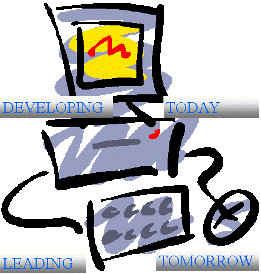Managing Technological Change 4
For example, the
An organization can hinder any change by not letting it happen. That is they don’t embrace the new change by not allowing its transition. According to a best selling author, “Transition starts with an ending-paradoxical but true” is a change management concept (Bridges, 1991, p. 4). The author illustrates this concept with the organizational change of a software company. Here he discusses a software company that was not adequately addressing its customers’ needs. To meet their needs the company reorganized their help telephone desk to teams responsible for solving the customer’s inquiry. Previously, three echelons of territorial technicians and programmers handled customer inquires. The cutover was not successful (Bridges, 1991). Through the informal grapevine and other association techniques, software personnel continued to work with their old echelon counterparts and not in the newly formed teams.
Managing Technological Change 5
Ron Weber (1982) addressed such an organizational mishap a decade before. Ron Weber was one of the original authors that technological auditors used to study system implications.
Behavioral problems are likely to arise unless the designer unfreezes and refreezes the organization when a new system is implemented or old system is modified substantially. Unfreezing activities helps avoid having to impose change upon organizational members. Refreezing activities makes it more difficult for organizational members to revert to their old attitudes and behavior patterns. (p. 106)
This lesson is comparable to Lewin’s Change Process Model (as cited in Marchewka, 2006). Unfreezing activities can be simply removing users’ anxiety about the new system and making them feel comfortable with the new.
According to Marchewka (2006), there are two sides to change: the soft side and the hard side. The soft side pertains to people while the hard side refers to the technical side of a project. Note here that a project intertwines people and technology. Marchewka’s caveat to us is that technical project should be built with the people in mind otherwise it could be rejected by the users and be an organizational failure. This is a real human response, “It works but I don’t like it.” Such an attitude causes project management to bound their activities to the soft, human, side for technological acceptance. Well, at this point the humans are still in control.
Return to Web Site's Index
DELAWARE'S MIDDLETOWN ODESSA AND TOWNSEND AREA
